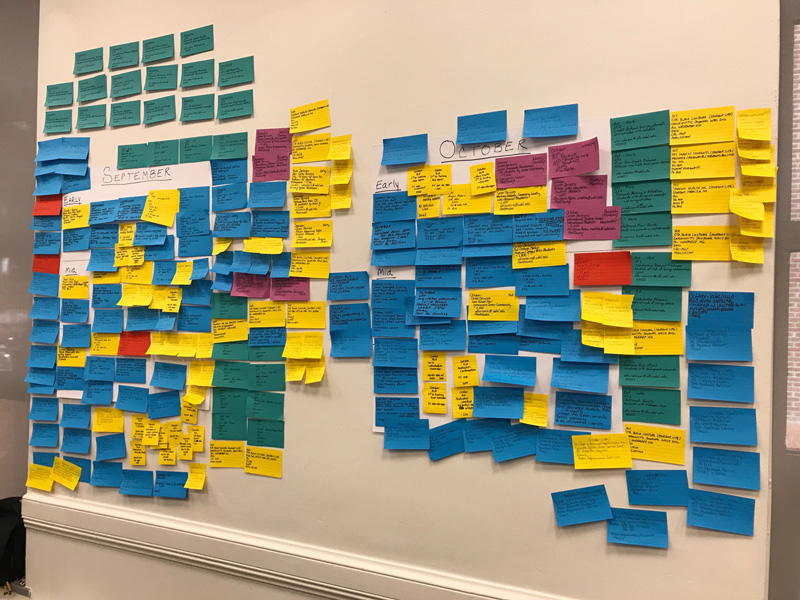


Crafting better emails for better student outcomes
February 22, 2018
Working group formed to improve student communications
From enrollment through graduation, students get hundreds of emails during their time at the University of Delaware—everything from essential messages about academics and finances to information about internships, housing and extracurricular opportunities. Sorting through them can be daunting.
That’s why a working group of communications staff is exploring ways to help make those messages more effective and, in turn, promote students’ success at UD.
Chris Lucier, vice president of enrollment management, convened the Improving Student Communications Working Group (ISCWG) in late 2016. It grew out of a presentation to University officials by EAB, the student-success research and consulting group that created the technology behind the Blue Hen Success Collaborative. EAB’s previous research has shown that many students nationwide ignore important emails from their universities, find them confusing and fail to act on critical information in the emails.
“Overlooking or misunderstanding an important email could have major consequences for students,” Lucier said. “They might not get the courses or financial aid they need to graduate on time, or they could miss an internship or research opportunity. Communicating effectively with our students is absolutely essential to their success.”
The issue is especially important for students who come from low-income households or are the first in their families to attend college, since they might not have the financial or social resources to make up for a missed opportunity, Lucier said.
The ISCWG is comprised of representatives from colleges, the Blue Hen Success Collaborative, the Registrar’s Office, Student Financial Services, the Division of Student Life, the Institute for Global Studies, Information Technologies and the Office of Communications and Marketing, among others.
In 2017, the group focused on defining and understanding the problem at UD. A “summit” of communications staff from throughout the University met in September to map out every email that students may be sent in a typical fall semester. The exercise found students are flooded with emails in September, which may be especially overwhelming for first-year students who are adjusting to a new life on campus.
“While we all know that students get a lot of emails, seeing the huge volume of them all piled up in September was really eye-opening,” said Sheri Rodriguez, assistant dean in the College of Arts and Sciences, who chaired the working group in 2017.
“Students are sorting through all of those messages, trying to figure out who is sending them, which ones are essential and which ones can be put off until later or even ignored,” Rodriguez said. “Too often, the messages are long and confusing because they are impersonal and contain a lot of education jargon.”
As part of the group’s work, the Blue Hen Success Collaborative created templates of clear, concise messages on a variety of topics that advisers can use to help guide effective communications with students. BHSC Director Naomi Nash said the templates incorporate many of the best practices suggested by EAB’s research, such as the use of common words, active voice and catchy subject lines to get students to open and read the emails.
“Students are more likely to respond to messages that focus on them and their goals, rather than on the University’s rules and policies,” Nash said. “These are simple changes that anyone—advisers, professors, administrators—can use to make their emails more readable and effective.”
In 2018, the ISCWG plans to continue analyzing the data collected in October and explore alternative forms of communication, such as smartphone apps or texting, as more efficient ways of reaching students. The group also plans to talk to UD students about what factors make them most likely to open, read and act on important email messages.
“Ultimately, we plan to share all of this research with everyone at UD who wants to improve their communications with students, whether that’s faculty, staff or administration,” said Mike Chalmers, director of leadership communications in the Office of Communications and Marketing, who is chairing the working group in 2018.
Lucier said clear, effective communication will help ensure that more students “finish in four,” as well as make the most of their UD experience.
“Getting this right—and using good communication practices throughout the University—will help every student succeed at UD,” Lucier said.
Contact Us
Have a UDaily story idea?
Contact us at ocm@udel.edu
Members of the press
Contact us at 302-831-NEWS or visit the Media Relations website

